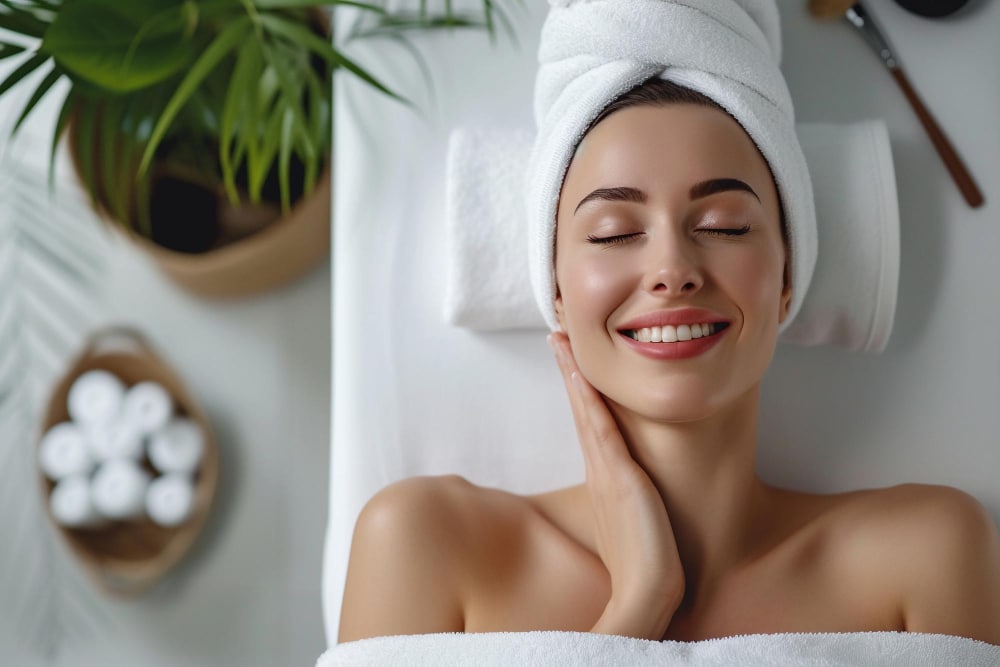
Improving skin quality is crucial for enhancing the effectiveness of aesthetic treatments like dermal fillers and botulinum toxin injections. Mesotherapy, introduced by Dr. Michel Pistor in 1976, involves injecting biocompatible medications directly into the skin to achieve youthful and healthy skin. This procedure boosts skin rejuvenation by activating fibroblasts and replenishing hydration, enhancing elasticity and tone. Mesotherapy also addresses various skin and hair conditions such as cellulite, hair loss, and acne. Familiarizing with mesotherapy and offering it in practice can be beneficial for aesthetic practitioners. This article presents a case study of a patient receiving mesotherapy for dry skin in the under-eye and mid-cheek areas, outlining the procedure protocol, guidelines, and expected outcomes.
Patient One, a 37-year-old female, had undergone prior treatments including botulinum toxin for dynamic wrinkles, dermal fillers for volume restoration, and hyaluronic acid for skin hydration. Despite the hyaluronic acid treatment, she continued to experience persistent skin dryness. Mesotherapy was suggested as an alternative solution, and Patient One opted for a series of four facial mesotherapy sessions.
To begin the first session, the patient’s skin was cleansed with chlorhexidine solution, and the mesogun was loaded with a 5ml hydration protocol mixture. Proper injection depth is crucial in mesotherapy, with excess product left on the skin for absorption. Minor discomfort was experienced around the upper lip area.
The nappage technique, involving quick linear injections to the superficial or mid-dermis at a 30° to 60° angle, was employed. Each droplet contained 0.1 ml of the mixture, spaced a few millimeters apart.
Following injections, a recovery cream and SPF50 sunscreen were applied. The patient was advised against cleansing her face immediately post-treatment. No bruising was observed, and minimal downtime was experienced.
The treatment spanned four sessions, scheduled two weeks apart, following the same regimen. Photos were taken before each session to monitor progress.
Patient One noted improved skin texture and hydration after the first session, with significant changes observed after the third and fourth sessions. At the final review, conducted four weeks post-treatment, she reported sustained hydration throughout the day and expressed satisfaction with the results.
The initial benefits can be prolonged through bi-monthly maintenance sessions, tailored to the patient’s skin condition and needs. Regular assessment ensures continued efficacy and optimal results.
Treatment Protocol: Mesotherapy typically comprises four sessions, spaced weekly or biweekly. An automated mesogun ensures consistent product distribution and injection depth throughout each session.
Treatment Session: Each session follows a standardized procedure, utilizing a customized cocktail of ingredients targeting various skin concerns. For hydration, a blend containing medium-molecular-weight hyaluronic acid and revitalizing complexes may be used, tailored to the patient’s needs.
Pre-treatment Considerations: Patient medical history is assessed to determine suitability for mesotherapy. Detailed pre-treatment briefing covers procedure duration, expectations, post-treatment care, and maintenance requirements. Baseline photographs are taken for progress monitoring.
Instrumentation: The Mesogun: The mesogun administers uniform microinjections at a depth of 1mm and a rate of 300 injections per minute. Its use enhances patient comfort and reduces perceived pain, contributing to a positive treatment experience.
Mesotherapy offers substantial benefits in skin hydration and rejuvenation, contributing to long-term skin health and appearance enhancement. With minimal side effects, little downtime, and suitability for diverse skin types, mesotherapy emerges as a versatile solution in aesthetic medicine. Its effectiveness is supported by research and clinical evidence, affirming its importance as a cornerstone treatment in aesthetic medical practices.
Join our newsletter to receive latest news and offers

Medicle MD Ltd
Reg. Number: 14317237
Address: 27 Old Gloucester Street,
WC1N 3AX London,
United Kingdom